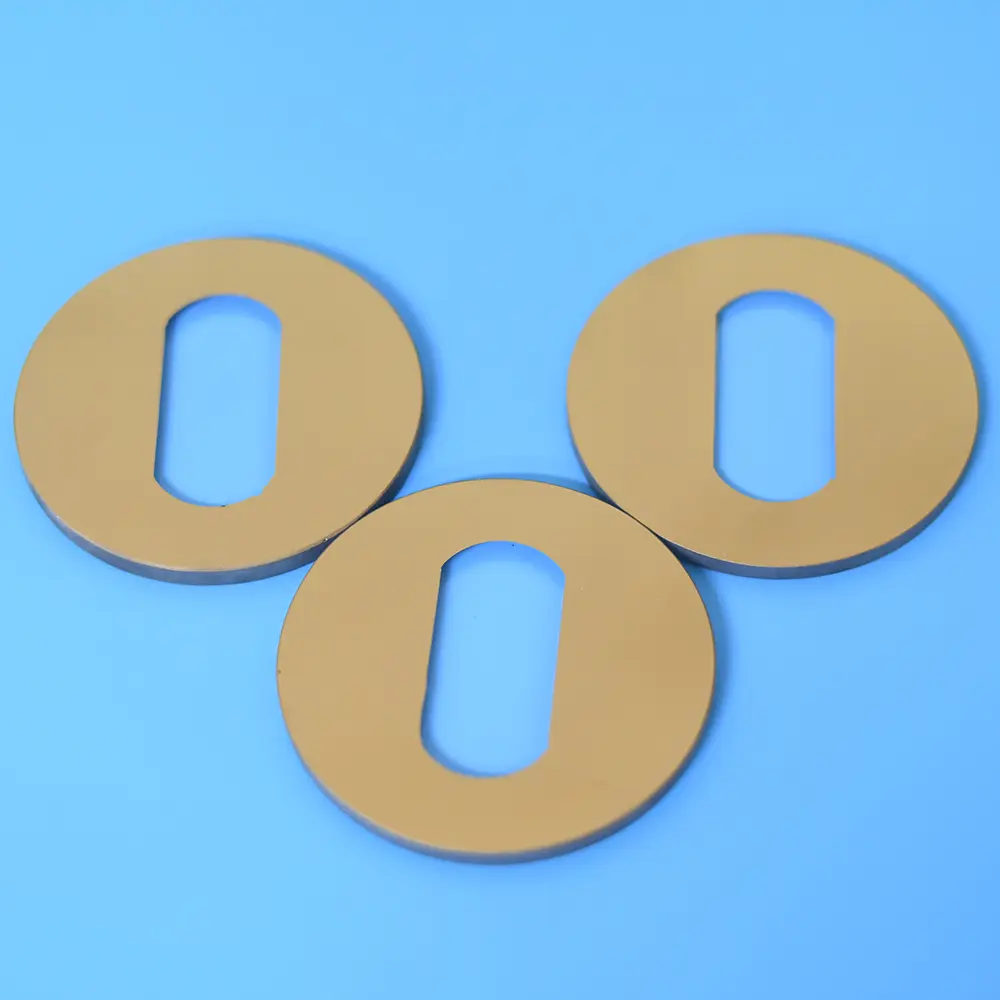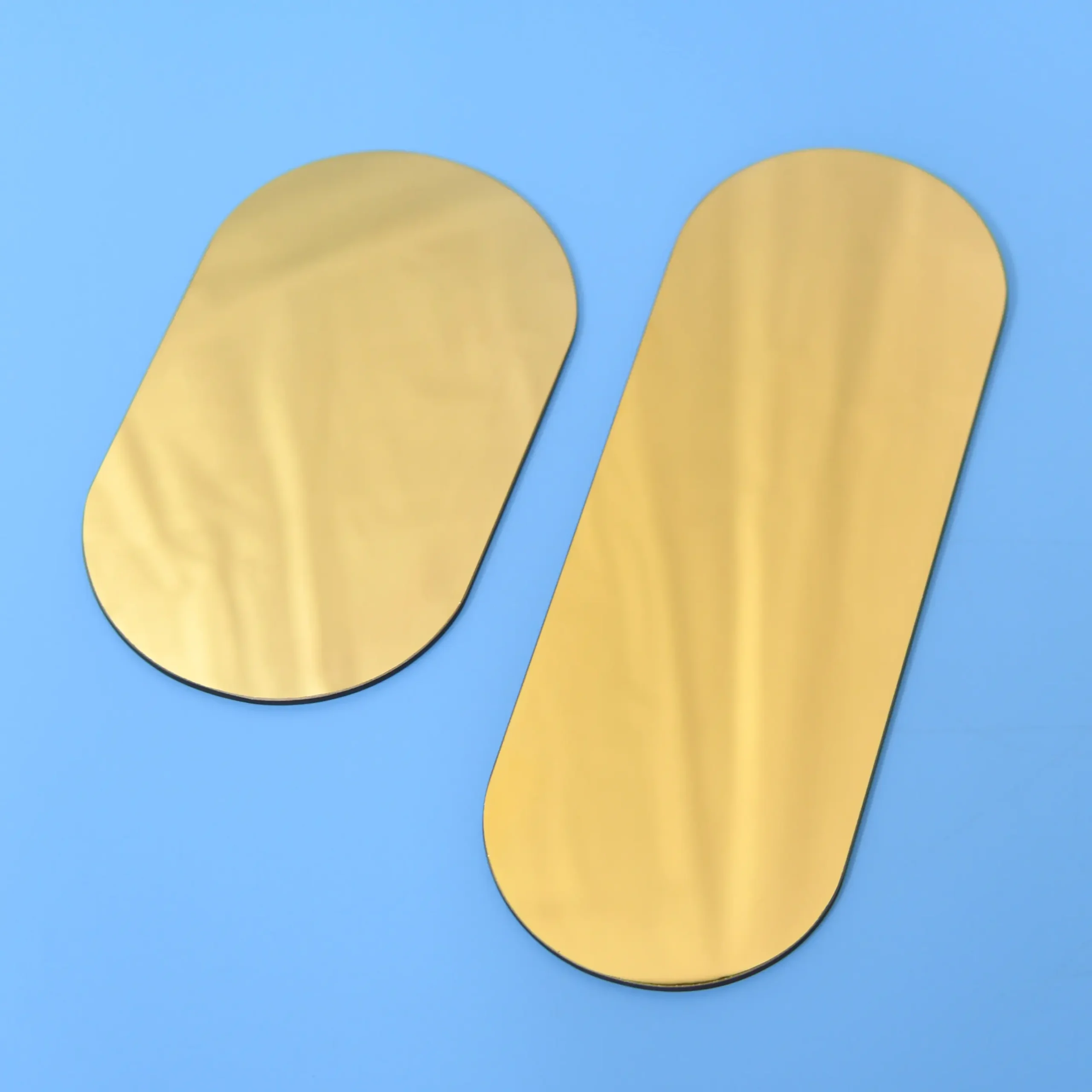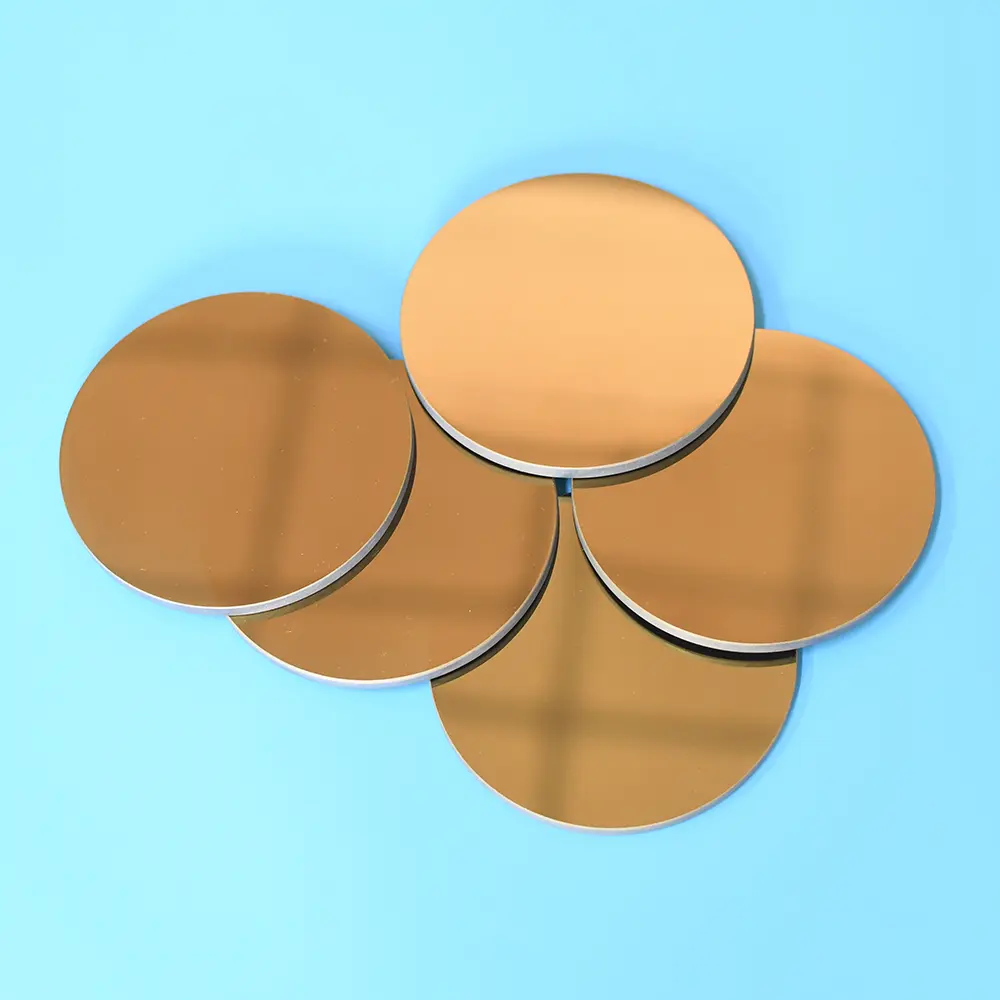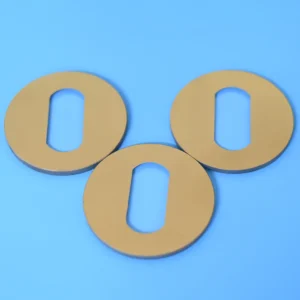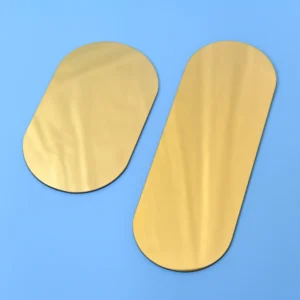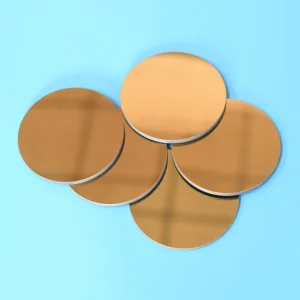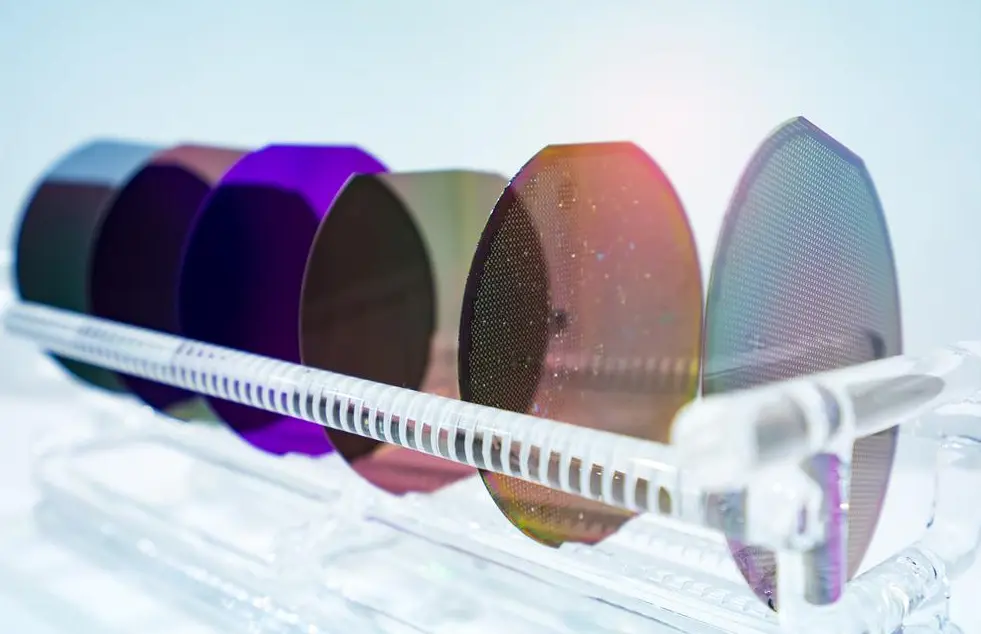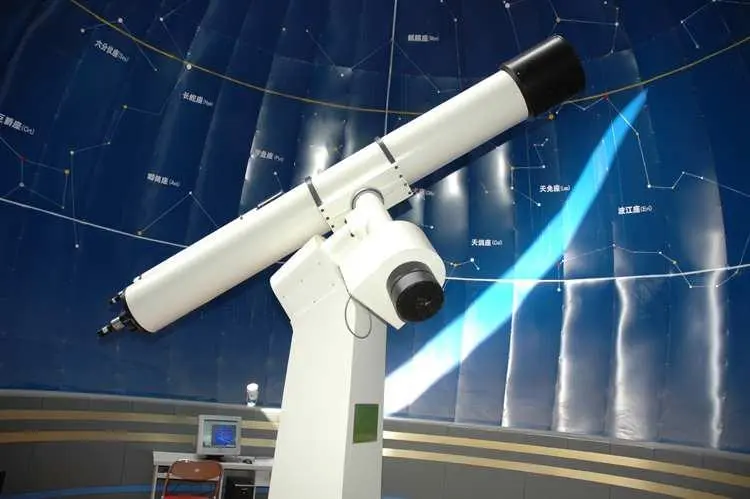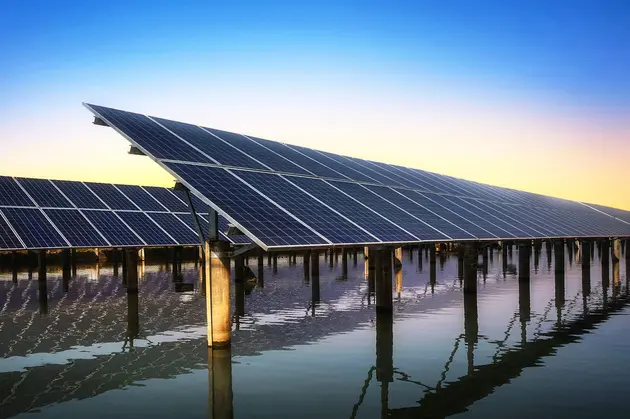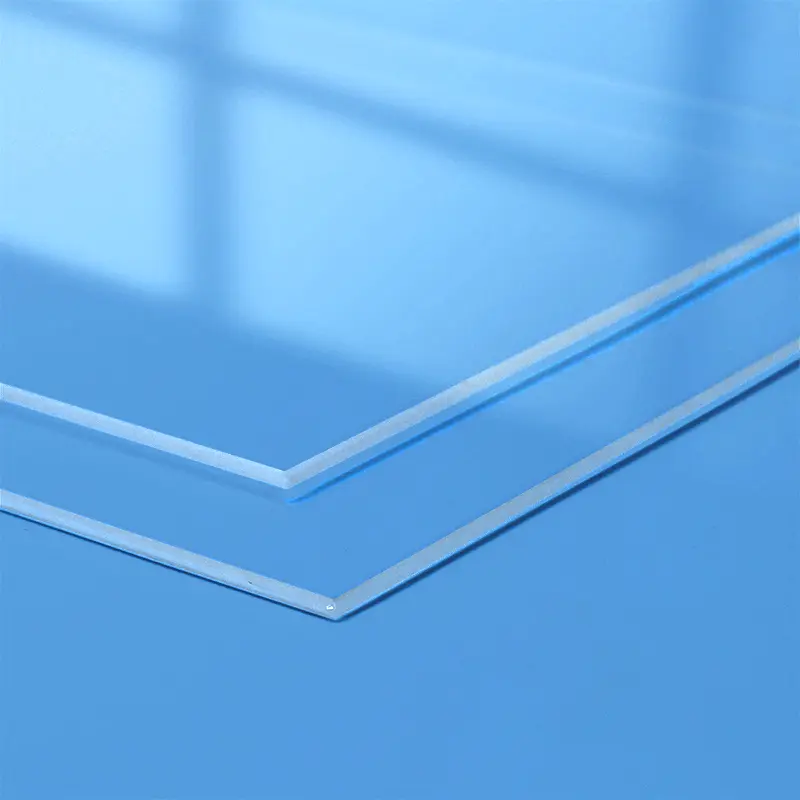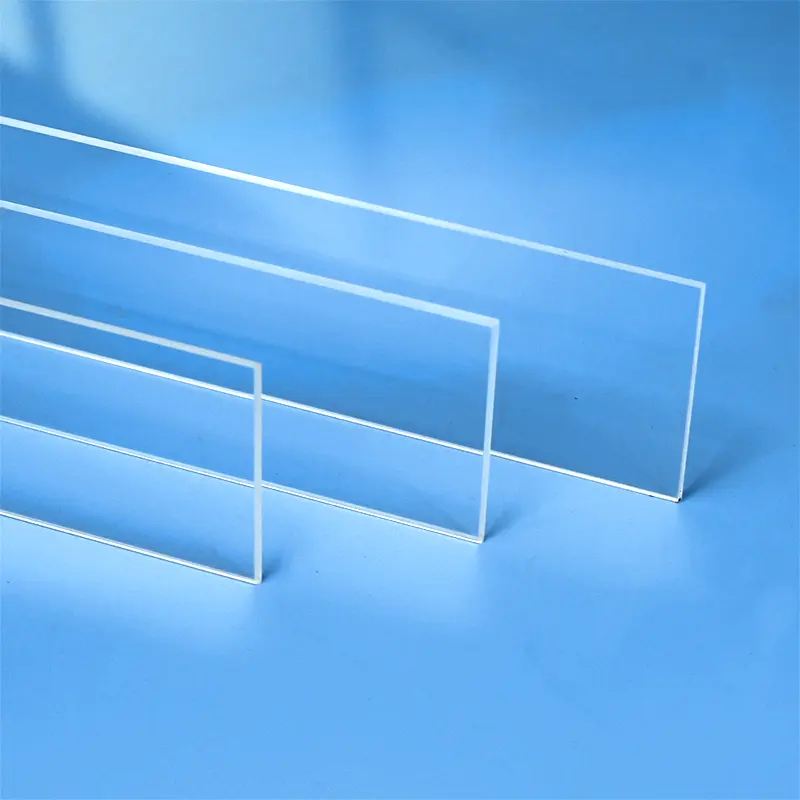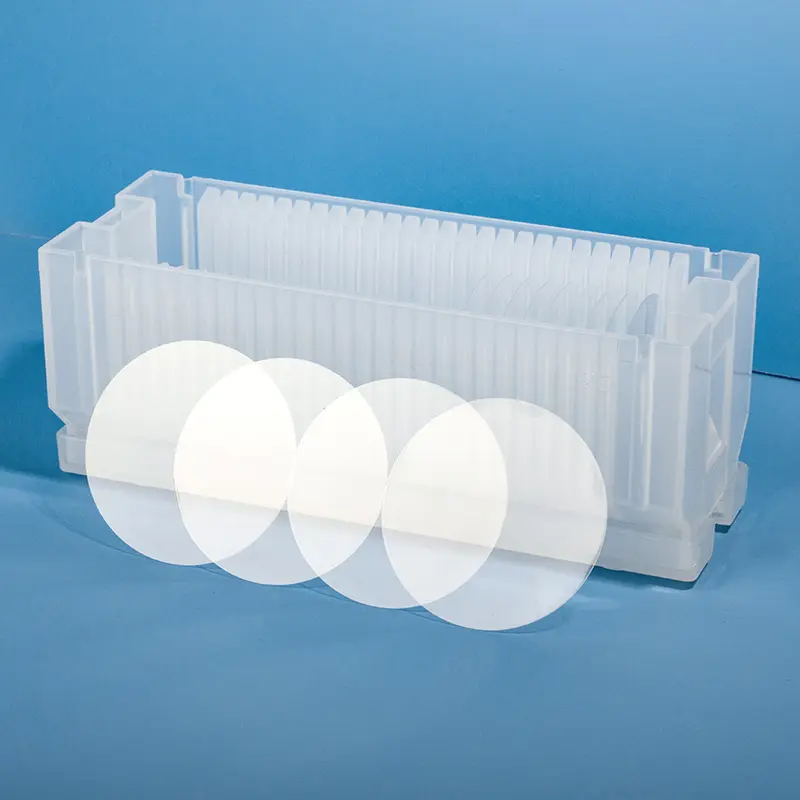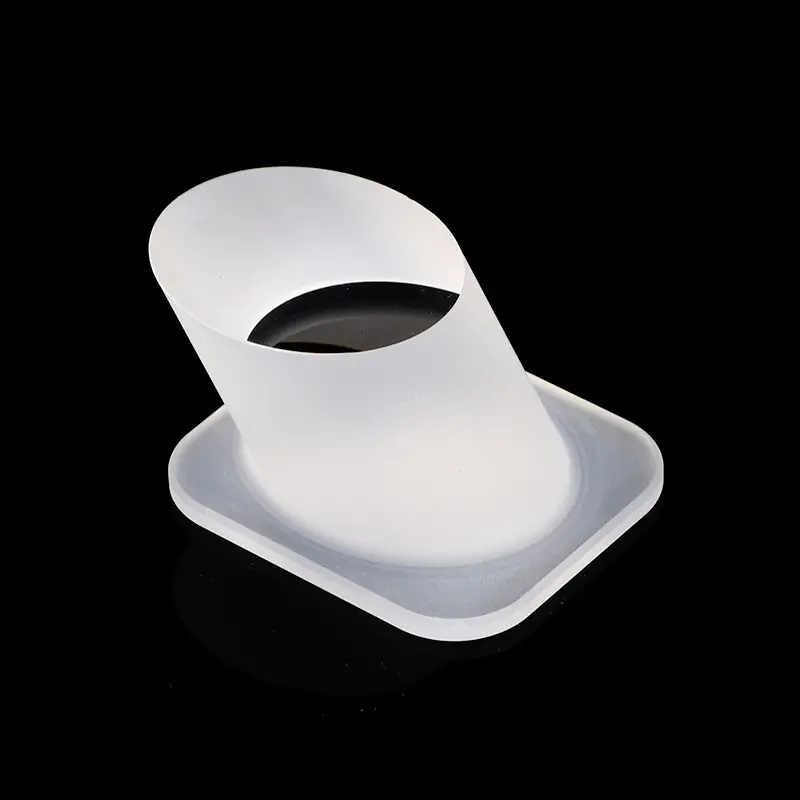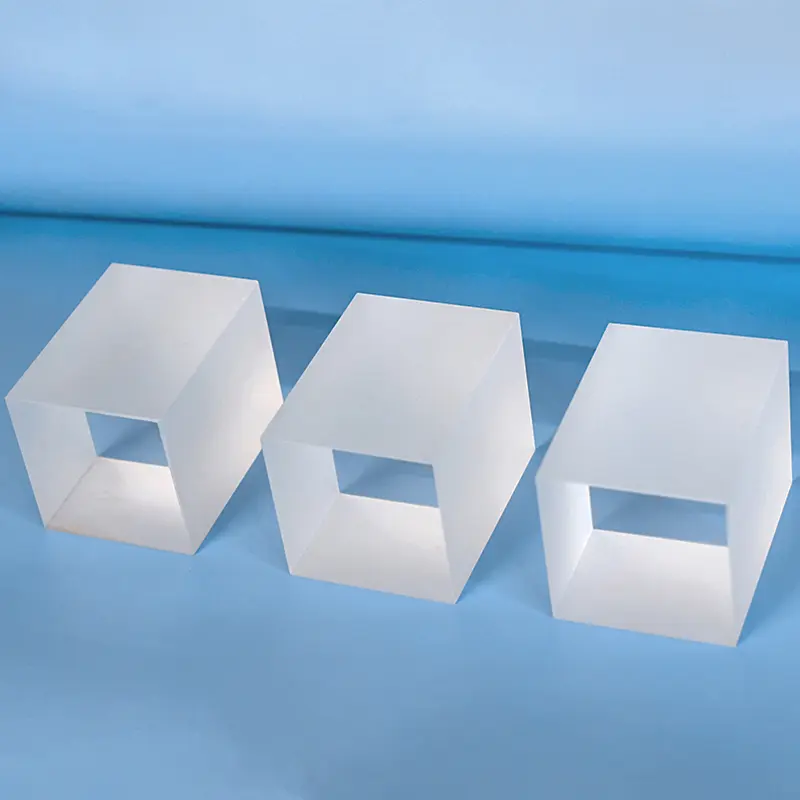Unsere kundenspezifischen vergoldeten Quarzplatten, wie die abgebildeten runden Stücke mit einem länglichen Innenausschnitt, werden präzise aus hochreinem Quarzglas gefertigt. Der fortschrittliche Vergoldungsprozess bietet außergewöhnlich hohe Reflektivität (insbesondere im IR-Bereich), elektrische Leitfähigkeit und chemische Inertheit. Diese maßgeschneiderten Komponenten sind ideal für anspruchsvolle Anwendungen, die spezifische optische, elektrische oder schützende Eigenschaften in der Optik, Sensorik, Mikroelektronik und wissenschaftlichen Instrumentierung erfordern.
| Eigenschaftsinhalt | Eigenschaftswerte |
|---|---|
| SiO2 | 99.99% |
| Dichte | 2,2×10³ kg/cm³ |
| Härte | Mohs-Härte 5,5 - 6,5; Knoop-Härte 570 (bei 100 g Prüflast) |
| Zugfestigkeit | 4,8 × 10⁷ Pa (48 N/mm² bzw. 48 MPa); 7.000 psi |
| Druckfestigkeit | >1.1×10⁹ Pa (160,000 psi) |
| Wärmeausdehnungskoeffizient | 5.5×10⁻⁷ cm/cm·°C (20°C-320°C) |
| Wärmeleitfähigkeit | 1,4 W/m-°C |
| Spezifische Wärme | 670 J/kg-°C |
| Erweichungspunkt | 1730°C (3146°F) |
| Transformationspunkt | 1210°C (2210°F) |
| Spannungspunkt | 1120°C (2048°F) |
| Arbeitstemperatur | 1200°C (2192°F) |
| Elektrischer Widerstand | 7×10⁷ Ohm cm (350°C) |
| Größe | Kundenspezifisch |
| Logo | Personalisierung mit Logo |
Hohe Transparenz
Quarzglas selbst besitzt eine extrem hohe Transparenz, und der Goldbeschichtungsprozess beeinträchtigt seine optische Transmission nicht, wodurch in optischen Anwendungen eine herausragende Klarheit gewährleistet ist.
Hohe Temperaturbeständigkeit
Das Quarzmaterial hält Dauereinsatztemperaturen von bis zu 1100°C stand, wodurch es für Hochtemperaturumgebungen geeignet ist.
Optimierte Goldbeschichtung
Die Goldschichtbeschichtung verbessert das Reflexionsvermögen des Quarzglases, insbesondere im Infrarot- und sichtbaren Lichtbereich, und bietet gleichzeitig eine gute elektrische Leitfähigkeit.
Formenvielfalt
Kundenspezifische goldbeschichtete Quarzglasplatten können in verschiedene Formen gefertigt werden, wie z.B. runde, quadratische oder andere komplexe Formen, um spezifische Anwendungsanforderungen zu erfüllen.
Anwendungsszenario
Halbleiterfertigung
In Halbleiterprozessen werden kundenspezifische goldbeschichtete Quarzglasplatten als verschiedene Komponenten wie Ofenrohre und Quarzboote verwendet, die einen direkten oder indirekten Kontakt mit Siliziumwafern in Hochtemperaturumgebungen erfordern. Die Hochtemperaturbeständigkeit und thermische Stabilität von Quarzmaterialien sind in diesen Anwendungen unerlässlich.
Herstellung optischer Linsen
Im Optikbereich werden kundenspezifische goldbeschichtete Quarzglasplatten eingesetzt, um die Reflexion zu mindern und die Lichttransmission zu verbessern, indem eine Quarzschicht auf die Glasoberfläche aufgetragen wird, wodurch die Leistung optischer Geräte gesteigert wird. Dies findet breite Anwendung in der Herstellung optischer Instrumente wie Kameraobjektive, Teleskope und Mikroskope.
Die Goldbeschichtung auf kundenspezifischen goldbeschichteten Quarzplatten dient hauptsächlich zwei Zwecken: erstens der Verbesserung ihrer optischen Leistung innerhalb spezifischer Wellenlängenbereiche, wie Reflexionsvermögen und Transmission; und zweitens der Bereitstellung einer guten elektrischen Leitfähigkeit, die in elektronischen und optoelektronischen Anwendungen von entscheidender Bedeutung ist.
In der Halbleiterfertigung können kundenspezifische goldbeschichtete Quarzplatten zur Herstellung von Komponenten wie Ofenrohren und Quarzglasbooten verwendet werden, die in Hochtemperaturumgebungen direkten oder indirekten Kontakt mit Siliziumwafern erfordern. Die Hochtemperaturbeständigkeit und thermische Stabilität von Quarz sind für diese Anwendungen entscheidend.
Die kundenspezifische Form von goldbeschichteten Quarzplatten ermöglicht deren Anpassung an diverse industrielle und wissenschaftliche Anwendungen. Spezifische Formen können beispielsweise beim Design bestimmter optischer Instrumente, Halbleiterfertigungsanlagen oder Solarmodule eingesetzt werden, um optimale Leistung und Kompatibilität zu gewährleisten.
Häufig gestellte Fragen
Wir sind auf die durchgängige Fertigung von hochreinen Quarzglaskomponenten spezialisiert. Unsere Kernproduktlinien umfassen:
Quarzrohre & -stäbe: Eine große Auswahl an Durchmessern und Spezifikationen.
Quarzplatten & -scheiben: Präzisionsgeschnitten und poliert für optische und industrielle Anwendungen.
Quarzlaborglas: Ein komplettes Sortiment an Standard- und kundenspezifischen Glasgeräten, einschließlich Bechergläsern, Kolben und Booten.
Halbleiterquarz: Hochreine Komponenten wie Prozessrohre und Träger für die Halbleiterfertigung.
Kundenspezifische Fertigungskomponenten: Wir können komplexe Teile nach Ihren einzigartigen Designs und Spezifikationen fertigen.
Ja. Kundenspezifische Fertigung ist das Herzstück unseres Geschäfts. Mit über einem Jahrzehnt spezialisierter Erfahrung arbeiten wir eng mit Unternehmen zusammen, um erstklassige OEM/ODM-Dienstleistungen anzubieten. Unsere Kompetenzen umfassen Schweißen, Schleifen, Bohren, Polieren, Biegen und weitere Präzisionsbearbeitungstechniken, um Komponenten zu fertigen, die exakt Ihren Anforderungen entsprechen.
Qualität ist in unserem Herstellungsprozess von größter Bedeutung. Wir sind ein ISO 9001:2015 zertifizierter Hersteller, der sicherstellt, dass unsere Prozesse internationale Qualitätsmanagementstandards erfüllen.Unsere Produkte durchlaufen zudem rigorose SGS-Prüfungen hinsichtlich Reinheit und Leistung. Wir verwenden hochreine Rohmaterialien (bis zu 99,998% SiO2), um Quarzglas- und Kieselglasprodukte mit außergewöhnlicher thermischer Stabilität, hoher Temperaturbeständigkeit und chemischer Inertheit herzustellen.
Wir haben unsere Prozesse maximal effizient gestaltet:
Senden Sie Ihre Angebotsanfrage (RFQ): Senden Sie uns Ihre technischen Zeichnungen, Spezifikationen und Anforderungen über unser Kontaktformular auf der Website oder per E-Mail.
Schnelle Reaktion: Sie können eine erste Antwort innerhalb weniger Minuten und eine detaillierte Kommunikation innerhalb einer halben Stunde erwarten.
Design & Angebot: Wir liefern Ihnen innerhalb von 24 Stunden einen detaillierten Designvorschlag und ein wettbewerbsfähiges Angebot.
Prototypenentwicklung & Produktion: Nach Freigabe gehen wir zügig von der Prototypenfertigung zur Serienproduktion über, um Ihre Fristen einzuhalten.
Eine Partnerschaft mit Aoxin Quartz bietet mehrere entscheidende Vorteile:
Nachgewiesene Expertise: Mit über 10 Jahren Branchenerfahrung verfügen wir über das technische Fachwissen, um komplexe Herausforderungen zu meistern.
One-Stop Solution: We manage the entire production process, from sourcing high-purity raw materials to fabricating and finishing complex components.
Wettbewerbsfähiger Wert: Als Standort in einem wichtigen Quarzproduktionszentrum nutzen wir eine effiziente Lieferkette und fortschrittliche Fertigung, um außergewöhnliche Qualität zu einem wettbewerbsfähigen Preis anzubieten.
Dedicated Partnership: Over 90% of our clients become long-term partners. We are committed to your success through responsive service, reliable quality, and innovative solutions.

